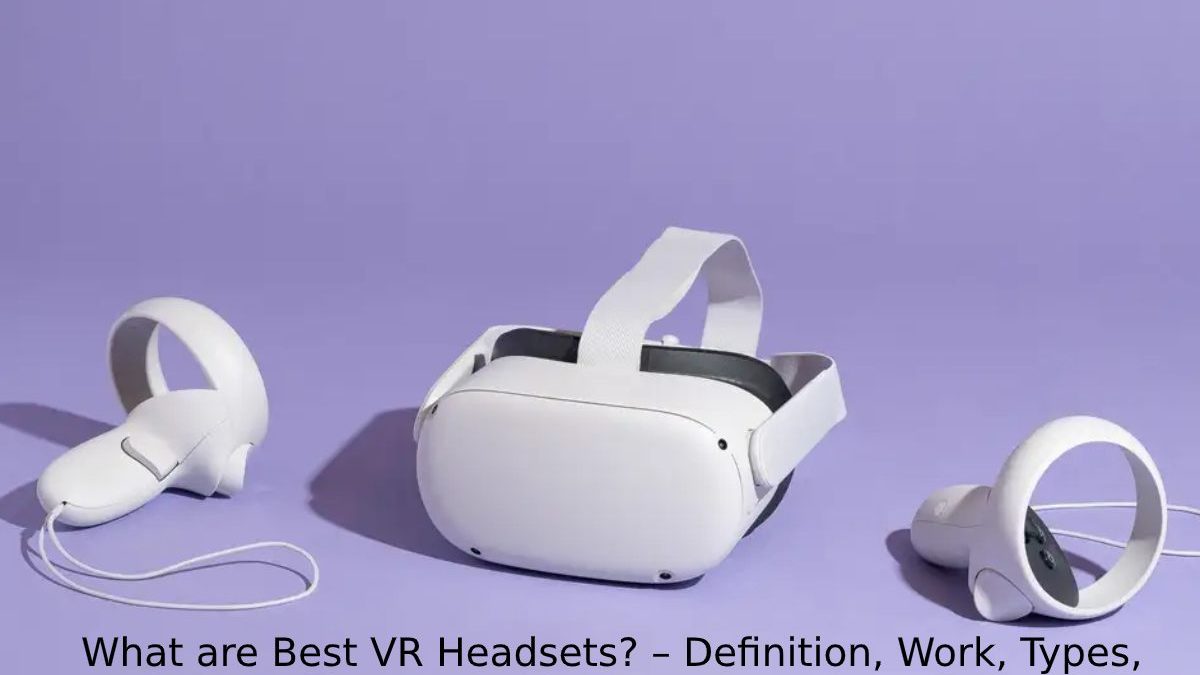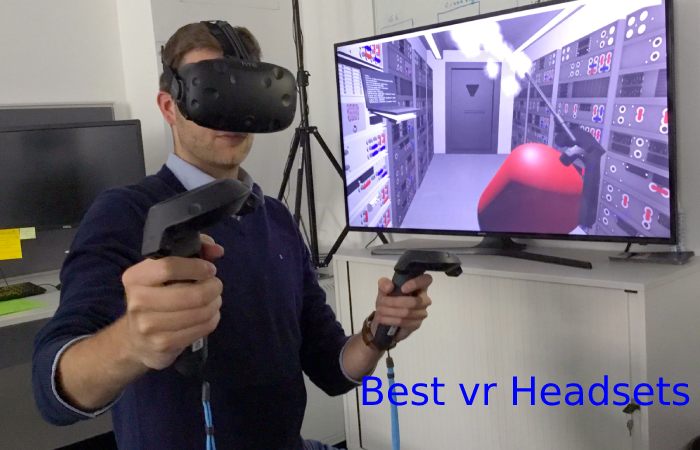Table of Contents
Best VR Headsets? – Definition,
Best VR Headsets Reality Headset for PC, PS4, and Xbox 360 based on the review, buying tips, and pricing. The purpose of a virtual reality headset is to immerse you in a virtual environment to feel as if you are fighting with life-size game characters, driving life-size cars, chasing life-size dragons, and meeting your friends feeling like it would feel in the physical real life. The more immersion from a headset, the better, but that may come at an additional cost.
The market has enough options–PC, mobile, and console headsets. Some headsets come as standalone devices, while others require other devices to be bought. Headsets come with a different capability for integration and support for other hardware, features, benefits, and challenges.
What they are and What are their Applications?
Virtual reality is the relatively less popular technology that allows users to virtually immerse themselves in the content they are browsing, for instance, games or virtually working.
Looking and browsing through the content while wearing the virtual reality headset over his or her head with the lens directly in front of their eyes, a user will feel as though they were physically present in the environments they are browsing through or looking at.
Second, the user can use gaze sensor mode by looking at the content through the lenses and can use hand controllers to virtually interact with to control the content they are browsing or looking at. This increases the feeling of immersion.
How Do VR Headsets Work?
A virtual reality headset comprises many parts including lenses, sensors, and connector ports.
The basic function of the device which is usually worn over the head with lenses placed in front of the eye is to project the image from a device such as smartphone graphics components, gaming console graphics components, or PC graphics components to the eye after creating a stereoscopic life-size 3D image, and environments.
For starters, a 3D image, video, and environment is one that a user can browse from all sides, left, right, center, up, and down.
- The headset can be so simple that it does not have an integrated computer device to recreate the image in 3D beyond having lenses but instead, has lenses to magnify already generated/created 3D images, videos, and environments into life-size images for further immersion.
- Cardboard headset comprises lenses that only magnify the image and contain the sensors that allow a user to browse the content with gaze mode, just by looking at the control points in the 3D environments or content; and by rotating the head (rotational tracking). A user will only need to slot the smartphone into the cardboard device and start enjoying the 3D environment.
- Simpler VR headsets lack 3D audio and hand or body tracking, so it is called half-immersion. The problem here is when the user moves the rest of their body–beyond the head and hands–for instance, the user takes a step forward in the real world, the entire VR environment moves and does not detect these movements.
- Headsets used for top-quality VR experiences have lenses, sensors, and controllers. Sensors and cameras are used for position-tracking or to track the position of the user, and for motion-tracking or for tracking the user’s motion.
- Positional and motion tracking helps to position the user or their body, or their hands, in the VR environment such that the user can move their body and move objects inside VR environments. This is called 6-degrees of freedom and the kind of VR is called Room-scale VR because besides rotating the head and using controllers to browse through the content, a user can move freely in the real world and consequently is tracked in the VR environment as they move around, and can even move objects in the virtual environment.
Types of VR Headsets
Virtual reality headsets are divided according to pricing and the level of immersion and experiences they provide, the type of connectivity with other devices, and based on how they track the user’s motion and position as they use the devices.
Based on connectivity or no connectivity with other devices:
a) Tethered
Types such as HTC Vivi Pro and others physically connect/tethered to a computer through a USB and/or HDMI cable. The connected powerful PC processes the 3D or VR environments and sends them to the headset which magnifies them and also manages the other inputs and outputs from and to the user.
b) Standalone
These lesser powerful headsets do not require an external connection to a PC or smartphone but come with an integrated computer, processors, sensors, and battery. Storage memory, and displays, and once strapped, they are ready to go. Although they can work with separate controllers and other position and motion tracking sensors and devices. Examples include Oculus Go and Lenovo Mirage Solo.
c) Smartphone
These lesser powerful headsets contain lenses and sometimes. Sensors and all it requires is the user to insert a VR-capable or another smartphone to enjoy VR apps. Smartphones that have gyroscopic sensors and accelerometers help create better immersion experiences with these lower quality headsets.
Challenges of Using VR Headsets
VR and headset devices have not reached mainstream adoption. All of them, are VR hardware companies. Software companies and content creators are yet to find regular day-to-day and massive applications for VR.
Virtual reality hardware, including headsets, is expensive. At the same time, only a few hardware currently in use can support virtual reality content and platforms. A long period needs before companies and persons can receive back on their VR investment or ROI.
Steeper learning curve and complicated setups compared to other technologies.
Internal implications such as nausea and feelings when you use the headset for long. Other challenges include light-headedness, discomfort or pain in the head or eyes. Drowsiness, fatigue, sweating, increased salvation, impaired hand-eye coordination, and impaired balance. Most of the best virtual reality headsets try to reduce those effects.
Conclusion
In conclusion, virtual reality headsets come in a variety of shapes, sizes, and types. If looking for the best virtual reality headsets. There are those standalone types that use alone without needing attachment to smartphones. PCs and there are those that require tether. On PCs and those that require smartphone insertion to play their role.


